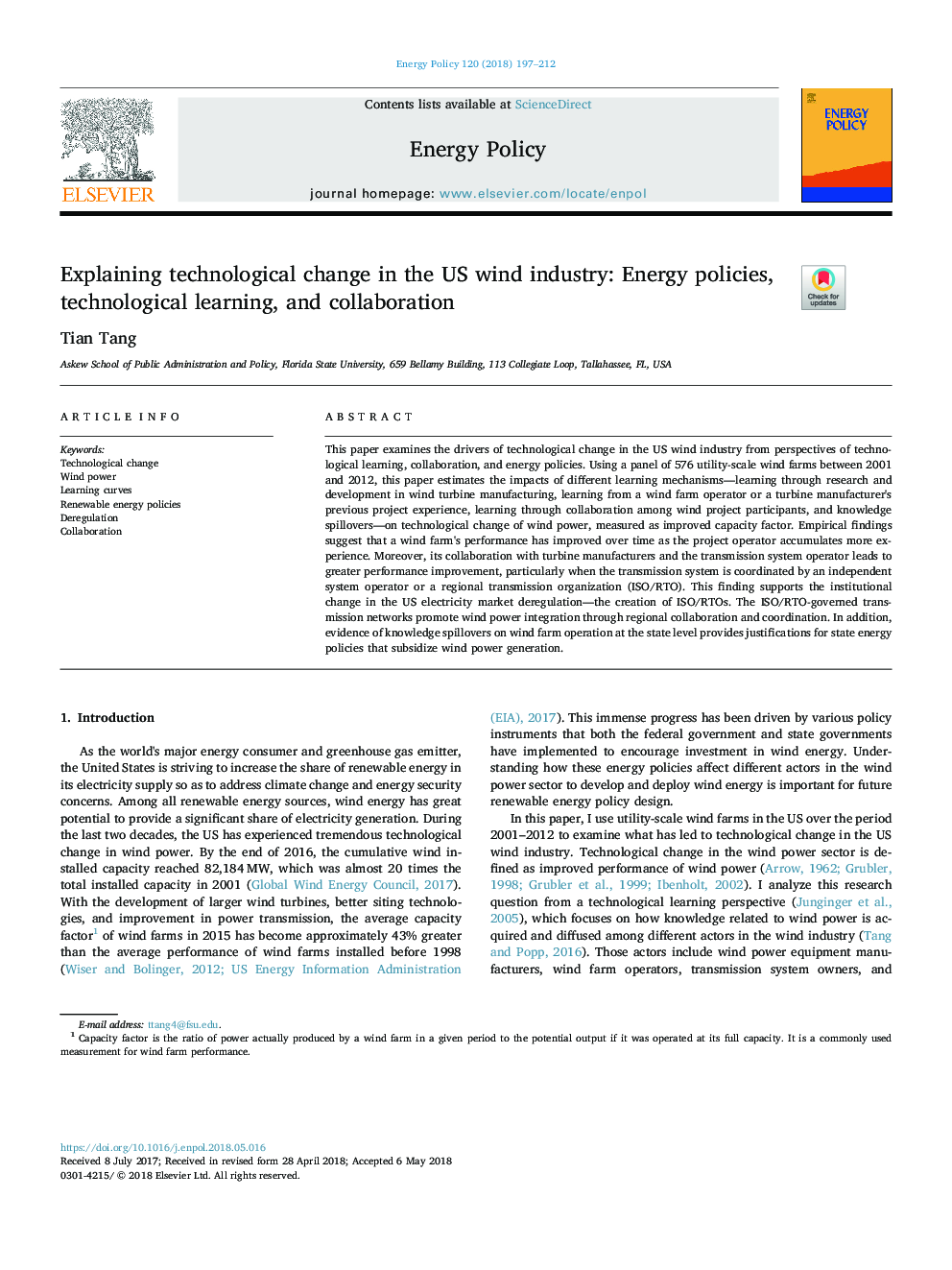| Article ID | Journal | Published Year | Pages | File Type |
|---|---|---|---|---|
| 7397237 | Energy Policy | 2018 | 16 Pages |
Abstract
This paper examines the drivers of technological change in the US wind industry from perspectives of technological learning, collaboration, and energy policies. Using a panel of 576 utility-scale wind farms between 2001 and 2012, this paper estimates the impacts of different learning mechanisms-learning through research and development in wind turbine manufacturing, learning from a wind farm operator or a turbine manufacturer's previous project experience, learning through collaboration among wind project participants, and knowledge spillovers-on technological change of wind power, measured as improved capacity factor. Empirical findings suggest that a wind farm's performance has improved over time as the project operator accumulates more experience. Moreover, its collaboration with turbine manufacturers and the transmission system operator leads to greater performance improvement, particularly when the transmission system is coordinated by an independent system operator or a regional transmission organization (ISO/RTO). This finding supports the institutional change in the US electricity market deregulation-the creation of ISO/RTOs. The ISO/RTO-governed transmission networks promote wind power integration through regional collaboration and coordination. In addition, evidence of knowledge spillovers on wind farm operation at the state level provides justifications for state energy policies that subsidize wind power generation.
Keywords
Related Topics
Physical Sciences and Engineering
Energy
Energy Engineering and Power Technology
Authors
Tian Tang,
